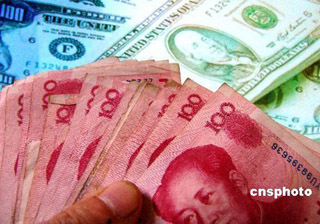
 China Tours
China Tours Tibet Tours
Tibet Tours China Theme Tours
China Theme Tours Off The Beaten Track
Off The Beaten Track Yangtze Cruises
Yangtze Cruises China Trip Planner
China Trip Planner Travel Agents
Travel Agents


We had a wonderful time in Tibet. We have learned a lot about this unique destination because of the wonderful guide Degyi who is so knowledge and always available towards our tours. We stayed at the Shangri-La Hotel Lhasa, and we would never imagine a Tibet travel could be so nice and amazing without the help of Degyi.
Also, thanks a lot to our Tibetan driver Mr.Wongdun for his safe driving and a good sense of service along the way.
We shall return Tibet in the near future!
P.B. and A. A - Europe
Tibet Travel
June 2018 (Private Tibet Journey from Kathmandu)


Since China's economic reform and opening-up, the economy develops rapidly, being the second largest economy entity in the world only next to the US, with a GDP of over $ 7 trillion (2007) when measured on a purchasing power parity (PPP) basis. China's economy shows a fast-growing prospect.
Economic restructure is one of the most crucial elements of China's reform and opening-up policy. For the first 30 years of the PRC, the government practiced a planned economy system, whereby industrial production, agricultural production, and the stocking and selling of goods in commercial departments were all controlled by state plan. The variety, quantity and prices in every sphere of the economy were fixed by state planners. While this contributed to the planned, focused and steady development of China's economy, it also sapped its vitality and limited its growth. Economic reforms began with the rural areas in 1978, and were extended to the cities in 1984. In 1992, after some 10 years of reform in the clear direction of the establishment of a socialist market economy, the government set out the main principles of economic restructuring: encouraging the development of diversified economic elements whilst retaining the dominance of the public sector; creation of a modern enterprise system to meet the requirements of the market economy; a unified and open market system across China, linking domestic and international markets, and promoting the optimization of resources; transformation of government economic management in order to establish a complete macro-control system; encouraging certain lead groups and areas to become rich first, enabling them to help others towards prosperity too; the formulation of a China-appropriate social security system for both urban and rural residents, so as to promote overall economic development and ensure social stability. In 1997, the government stressed the importance of the non-public sector to China's national economy, in which profitability is encouraged for such essential factors of production as capital and technology, so as to further progress economic reforms.
China's per capita income has grown at an average annual rate of more than 8% over the last three decades, so it drastically reduced poverty, but this rapid growth has been accompanied by rising income inequalities. The per capita income is classified as low by world standards, at about $2,000 (nominal, 107th of 179 countries/economies), and $7,800 (PPP, 82nd of 179 countries/economies) in 2006, according to the IMF. With public ownership playing a dominant role in China's economy and diverse forms of ownership, developing side by side is a basic characteristic of the socialist economic system at the preliminary stage. However, according to this growing trend, the sound development of China's economy is a must.
China Trip Planner | Travel Agents | About Us | Why Us | Contact Us | How to Pay | How to Book - Terms & Conditions | Site Map
Copyright © 2010 - 2030 All Rights Reserved.


 0086-28-85711328
0086-28-85711328 0086-28-85546015
0086-28-85546015




